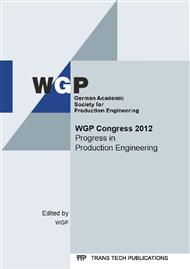p.75
p.89
p.99
p.113
p.127
p.139
p.151
p.165
p.181
Highly Flexible Final Production Stages - Taking Advantages of Scale Effects by Reducing Internal Component Variants
Abstract:
The rapid manufacturing of a great variety of variant products is gaining importance in global competition. Customers are increasingly demanding products which are matched to their specific demands. The production of these customized variants gives a competitive advantage, but also affords a high inner variance which leads to high production costs. Almost every step in the process of making a product is capable of generating variants. A key element in variant management is to make the variants as late as possible in order to exploit economies of scale in the earlier stages of production and to minimize the complexity of production. The technique of the highly flexible final production stage consists in achieving a late emergence of variants by integrating the variant-specific manufacturing processes into the assembly stage and enabling a mass production within a preliminary production stage at the same time. This means abandoning the conventional distinction between manufacturing and assembly in favour of a division into the preliminary, variant-neutral production stage and a final production stage where the variants take shape. The final production stage includes all the processes that determine variants. The complete manufacture of variant-neutral parts and subassemblies takes place in the preliminary production stage, as does the pre-manufacturing of those parts and sub-assemblies which are to undergo final manufacturing as variants in the final production stage. In order to apply the technique of the highly flexible final production stage successfully an integrated approach is necessary which is presented in this paper.
Info:
Periodical:
Pages:
127-137
Citation:
Online since:
April 2014
Authors:
Keywords:
Price:
Сopyright:
© 2014 Trans Tech Publications Ltd. All Rights Reserved
Share:
Citation:


